Before you can get your LTO Driver's License in the Philippines, you are required to pass through a written examination. If you want to pass this Driver's Exam or "LTO Written Test on Driving", you got to have a better understanding of the questions and problems of the written exam. Here's a free Driver's License exam reviewer from LTO. I'm sure you will have a 95% chance to pass the exam if you study this reviewer carefully. This is an English version of the written exam. If you want a Tagalog version, you can read it here: "LTO Driver's License Exam Reviewer".
Here's a tip. To easily absorb and understand the concepts given in this reviewer, use your imagination or picture in your mind each situations and problems.
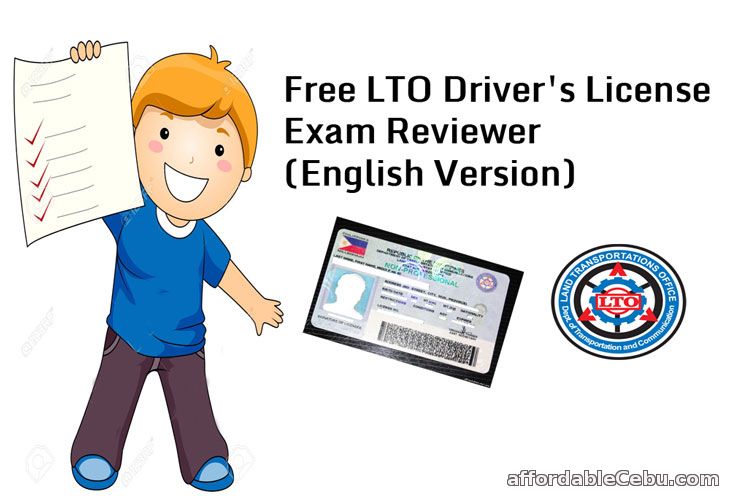
LTO WRITTEN TEST ON DRIVING
Published hereunder are questions and answers on driving test for the information of all concerned. Those applying for a student permit must have a score of 20 correct answers for a set of 25 questions. For non-professionals, 35 out of 40. For professionals, 50 out of 60. Correct answers are underlined.
- The three colors of the traffic lights are:
- red, green and yellow
- red, green and blue
- yellow, green and blue
- Yellow triangular signs provide what kind of information
- warning
- hospital across
- speed limit
- Which of the following traffic signs are blue?
- regulatory signs
- information signs
- danger warning signs
- Steady green light means
- you must yield to all pedestrians and other motorists using the intersection
- go, it is safe to do so
- proceed cautiously through the intersection before the light changes to red.
- A flashing yellow light at a road crossing signifies
- Caution - slow down and proceed with caution
- Stop and stay until light stops flashing
- Wait for the green light
- A solid white line on the right edge of the highway slopes in towards your left. This shows that
- there is an intersection joint ahead
- the road will get narrower
- you are approaching a construction area
- You are in a No-Passing zone when the center of the road is marked by
- a broken yellow line
- a broken white line
- two solid yellow lines
- When arrows are painted on the pavement, drivers must:
- must go in the direction of the arrows
- slow down and prepare to yield right of way
- are not allowed to change lanes
- You may not drive across solid yellow lines except to
- change lanes
- turn left
- turn right
- Double solid yellow lane lines
- should not be crossed except with due care
- should not be crossed anytime
- does not allow lane changing
- You may not cross a single broken white of yellow line
- when turning left into a driveway
- when passing to the right on a one-way street
- when to do so would interfere with traffic
- You may cross over a double line on the road to overtake another car if the line on your side is
- solid white
- broken
- solid yellow
- When you approach a flashing red signal light, you should
- wait for the green light before proceeding
- slow down and proceed with caution
- come to a full stop and proceed when it is safe to do so
- Which of the following hand signal's must a driver give when he wants to slow down and stop?
- left is bent at elbow, hand pointing up
- left arm held straight in horizontal position
- left arm held down and hand pointing at ground
- The proper hand signal for right turn is
- left arm bent at elbow, hand pointing up
- left arm held straight in horizontal position
- left arm held down and hand pointing at ground
- If the driver ahead of your extends his left arm straight out, you are fairly sure that he is going to
- turn left at the next intersection
- pull off to the side of the road to stop
- turn right at the next intersection
- When approaching a railway crossing with a signal device warning the approach of a train, you must
- stop not less than 1.5 meters from the nearest rail
- slow down and proceed with caution
- At what circumstances should you sound your "horn"?
- as a safety warning
- at school zones
- at hospital zones
- What does the lane require you to do upon approaching an intersection with a stop sign?
- slow down and proceed when it is safe to do so
- stop and proceed when it is safe to do so
- yield the right-of-way if necessary to vehicles approaching from left or right
- Upon approaching an intersection marked with a YIELD SIGN, you are required to
- stop before entering the intersection
- enter the intersection immediately
- slow down then enter the intersection when the way is clear
- The road sign "Do Not Enter" is a
- Regulatory sign
- Guide sign
- Warning sign
- The Right-of-Way law provides us with
- basic rights as drivers
- rules for when to yield to others
- rules for turning right
- A good safety rule when you are sure you have the legal right-of-way is
- never believe on it
- sound your horn to alert others
- always demand
- At rotundas, which of the following vehicles have the right-of-way?
- vehicles which are just about to enter
- vehicles within the rotunda
- vehicles facing the green light
- At an intersection with no control device, two cars approach at right angles to each other. Which driver must yield?
- the driver who gets there first
- the driver who slows down first
- the driver who gets there last
- At an intersection with no control device, two cars approach from opposite directions. Which driver must yield?
- the driver going straight
- the driver turning light
- the driver turning right
- At an intersection without control device, two cars are approaching from opposite direction at approximately the same time, one is turning left and the other turning right. Which driver must yield?
- the driver turning right
- the driver turning left
- the driver who gets there first
- At an intersection without stop or yield signs, two cars reach the intersection at the same time. Which car has the right-of-way?
- the car on the right
- the car on the left
- the car that slows down first
- A car is positioned in an intersection waiting to turn left when the traffic signal light turns red. Who should go first?
- the driver caught in the intersection waiting to turn left
- the driver making the right turn
- the driver caught with the green light
- At an intersection without stop or yield signs, two cars approach from different streets. Which car has the right-of-way?
- the vehicle already in the intersection
- the vehicle on the left
- the vehicle that slows down first
- The driver of a car traveling on a highway is required to yield to
- any car coming out of a driveway
- pedestrian
- cars approaching an intersection from the left
- When about to make a left run, you should give the right-of-way to cars coming from the opposite direction
- until at least two cars have passed
- which are close enough to be dangerous
- until five cars have passed
- If there are pedestrians on a school crossing, you are required to
- stop and give way only to persons crossing from your right
- stop only for children and give way to them from either direction
- stop and do not proceed until all persons are completely clear off the crossing
- Should a driver turning at an intersection give way to pedestrians?
- Yes, a driver turning right or left must give way to pedestrians
- No pedestrians must give way to all vehicles
- Yes, but only if the driver is turning left
- When on a street designed for two-way traffic, you hear the siren of an emergency vehicle. What does the law require you to do?
- pull to the right and stop
- speed up to get out of the way
- continue at high speed
- When two vehicles meet on an upgrade road where neither cars pass, which of the two must yield?
- the vehicle facing downhill
- the vehicle facing uphills
- the vehicle that blow its horn first
- Before changing lanes in traffic, you should always give a signal, check your rear-view mirror and
- turn your head to check other vehicles beside your car
- sound your horn
- blink your headlight
- You should change lanes only after you have
- signaled your intention and checked traffic
- signaled your intention
- checked traffic
- After passing or overtaking a car, you can safely move back into the lane, you left if
- the driver you have passed honks his horn
- you can see in your rear-view mirror the car you have passed
- you can see in your side-view mirror the car you have passed
- You may pass to the right of a car traveling in your direction
- if the highway is clearly marked for two or more lanes moving towards the same direction
- on a road having one lane in opposite direction
- by driving off the paved roadway
- If you are traveling in the wrong lane, what must you do to make a turn as you enter an intersection?
- make the turn as quickly as possible
- brake or clutch while actually turning
- look behind on both sides and see if it is safe before you change lane
- You should begin signaling for a right or left turn before reaching the turning point by at least
- 30 meters
- 60 meters
- 15 meters
- You should normally begin a right turn on
- the lane nearest to the road center
- the lane nearest the right curb
- the same lane as for a left turn
- The car behind you wants to pass. You should
- blow you horn to allow him to pass
- slow down slightly and pull to the right
- pull to the right and stop as he can pass
- When driving on the highway at night, you should use low beam headlights (dim lights) when
- another driver dims his lights
- blinded by the headlights of an approaching vehicle
- all of the above
- If the brake lights of several cars ahead of you flash on, you should
- release accelerator and prepare to brake
- apply your brakes as soon as possible
- increase your speed
- Which of these steps is not correct when making a right turn?
- stop in the crosswalk
- signal at least 30 meters ahead of your turn
- watch for pedestrians on the street you are about to enter
- The driver must not overtake at the foot or approach of a bridge because
- he cannot see oncoming vehicles form the other side of the bridge
- there are pedestrians crossing
- he might obstruct the flow of traffic
- The best practice when turning left or right while traveling on a highway is
- to signal your intention as you make the turn
- to give the electrical and/or hand signal at least 30 meters before you make the turn
- to disregard signaling if there is no traffic ahead or behind you.
- Using the shoulder of the road pass to the right of a car ahead of you is
- allowed if you are turning right
- allowed if the car ahead is turning left
- against the law
- Which of the following is not a safe place to overtake?
- when approaching a bridge or upon a curve
- at an intersection
- both of the above
- A left turn is more dangerous than a right turn because
- cars from the right are moving faster
- you have to be alert for vehicles coming from both left and right
- four-lane streets are wider than two-lane streets
- What light shall be used when vehicles are parked on the highway at night?
- headlight
- parking lights or lower-beam headlights
- signal lights
- Parking lights may used
- at anytime
- for parking and when visibility is poor
- when driving on a well-lighted streets
- We consider a vehicle parked when
- it has brought to stop on the shoulder of a highway and remains inactive in a place for an appreciable period of time
- it stops to discharge/take in waiting passengers
- it loads/unloads small quantity or freight with reasonable dispatch and moves away without delay
- When parking downhill, you should turn from from wheel
- into the curb or toward the side of the road
- away from the curb
- any direction will do
- When parking a card on an upgrade without a curb, the best practice is to
- get close to the curb and turn the front wheels away from curb
- turn wheels sharply to the left
- turn wheels sharply to the right
- What should you do when parking uphill and there is a curb?
- turn wheels to curb
- turn back of wheels to curb
- turn your front wheels sharply to the left away from curb
- Before moving your car from a parked position, you should
- check other traffic, signal and pull from curb when it is safe to do so
- signal and pull from curb
- sound your horn and pull from curb slowly
- You may never park
- on a crosswalk
- on a one-way street
- within 5-meters of a fire-hydrant
- When loading or unloading passengers, we usually stop at the
- right side of the road nearest the sidewalk
- middle side of the road
- intersection
- A driver may load and unload passengers
- only at designated STOPS
- whenever a passenger signals for a stop
- before an intersection
- Whenever you leave the car unattended, the law says that you stop the engine and
- notch effectively the hand brake
- shift the gear to neutral
- close the windows
- When you intend to drive slower than the other vehicles, you should use the
- outermost (right) lane
- center lane
- innermost (left) lane
- When you intend to drive faster than the other vehicles, you should use the
- outermost (right) lane
- center lane
- innermost (left) lane
- Which of the following is the maximum speed limit on expressway?
- 60 kph
- 80 kph
- 100 kph
- The speed limit within a school zone during school days is
- 20 kph
- 25 kph
- 30 kph
- When using the basic speed law as a guide, the choice of speed will be based
- speed of the driver
- fuel of car being driven
- traffic and road condition
- Under the basic speed law, you may never drive faster than
- that which is safe
- the posted limit
- the flow of traffic
- A safe speed to drive your car under adverse condition
- depends on the road and weather condition
- is the posted speed limit
- depends on the mechanical skill of the driver
- At night, you should never drive at a speed which would prevent you from stopping within the distance
- you can't see in your headlights
- of a 4 car-lengths
- of 170 feet
- The speed limit signs along the roadways should be thought of as
- the recommended speed under the best condition
- the recommended speed under the worst condition
- the recommended speed under any condition
- It is move dangerous to drive at the maximum speed limit at night than during daytime because
- your reaction time is slower at night
- the roadways are more apt to be slippery at night
- you cannot see too far ahead at night
- Night driving is dangerous because
- street lights tend to blur your vision
- more vehicles are on the road at night
- the distance we can see ahead is reduced
- When following behind another car, it is considered a safe rule to allow at least
- space for one car
- 15 feet of stopping distance
- one-car length per 10 miles of speed
- Which of the following should you do if you feel drowsy while driving?
- pull off the road and rest
- move over to the right lane and continue driving
- increase your speed to get away from other vehicles
- When approaching sharp curve on the highway, you should
- decrease speed before entering the curve
- increase speed while negotiating the curve
- apply your brake lightly while taking the curve
- Ignoring traffic lights during late hours of the night could
- make you a good driver
- involve you in fatal accident
- decrease your fuel consumption
- A good driving attitude of a driver is
- drive slowly
- drive-defensively
- take chances if possible
- Drivers gather most information with their
- cars
- eyes
- hands
- Which of the following is most recommended in a way of dealing with fatigue on a long trip?
- stop periodically for rest and exercise
- eat much and drink a little alcoholic beverages
- take an over-the-counter "keep awake" pill
- What habit will help you prevent a fixed stare and resist distraction?
- ground viewing
- moving your eyes regularly by looking near and far
- another car's speed
- Which of the following can you adjust in order to reduce the chance of collision?
- your speed and lane position
- the sharpness of a curve
- another car's speed
- Drivers have to make decisions
- only in heavy traffic
- only until they become experienced
- continuously as they drive
- When interacting with bicyclists, you must
- be more aware of the road condition
- adjust speed and increase your space margin
- use different visual-search ...
- As you drive, your glances to the side and rear view mirrors should be
- as brief as possible
- as long as you like
- at least one second each
- At night when you meet another vehicle with blinding bright lights, the safest thing to do is
- turn your lights on high beam
- look slightly to the right side of the roadway
- look at the headlight of the approaching vehicle
- When approaching an intersection and the roadway beyond is blocked with traffic, you should
- keep as close as possible to the car ahead
- proceed slowly into the intersection until the traffic ahead moves on
- stop before the intersection and wait until traffic ahead moves on
- Throwing bottles, cans or anything from your vehicle windows is
- forbidden at all times
- forbidden only in the province
- forbidden only is the cities
- The most effective way to deal with a "tailgater" is to
- ignore him but don't allow him to get very close to you
- slow down and let him pass
- increase your speed and slam on your brakes
- If you are traveling on a two-lane road and see the chances for trouble are equal on both sides, you should
- position your car slightly to the right
- position your car slightly to the left
- center your car between the hazards
- When walking on a roadway where there is no sidewalk, the pedestrians must always stay
- on the left side of the road facing traffic
- on the right side
- either way will do
- In case of an accident, the first duty of the driver involved is to
- pick-up the injured person and take him to the nearest hospital
- report the accident to the hospital
- report the accident to the nearest police station
- In case of injuries involved in an accident, the duty of the uninjured driver is to
- call a physician
- keep the victim lying down
- try to determine who is at fault
- To have one's driver's license suspended means to
- have it revalidated by the LTO
- have it taken away permanently by the LTO
- have it taken temporarily by the LTO
- The main reasons for requiring motor vehicle inspection is to
- earn revenue for the government
- give the inspector a chance to look at your car
- try and make sure that cars meet the safety standards
- A public utility vehicle can only be driven by holder of a
- student permit
- non-professional license
- professional
- To own a driver's license is
- an honor
- a right
- a privelege
- To avoid suspension or revocation, how many days must a driver with an apprehended license settle his case with LTO?
- within 15 days
- within 10 days
- within 30 days
- When may you lend your driver's license?
- under no circumstance
- to another person who is learning to drive
- in emergencies
- If you are involved in an accident, how soon must you make a report to your nearest police station?
- at once
- within 42 hours
- within 72 hours
- The driver's license issued to a driver shall entitle him to operate
- any kind of motor vehicle
- only motor vehicles described in the license
- motor vehicle for lifetime
- The rate of speed prescribed by law does not apply to the driver
- bringing his employer to an important official meeting
- of a vehicle who is in pursuit of criminal
- operating along the highway where traffic is light
- A person whose driver's license is under suspension may
- operate a motor vehicle in a case of extreme emergency
- not operate a motor vehicle under any condition
- operate a motor vehicle when accompanied by a licensed driver
- How should you behave when an approaching officer flags down your vehicle?
- ignore the apprehending officer and drive away at increased speed
- stop and argue with the apprehending officer
- surrender your driver's license and other documents upon demand
- The purpose of traffic laws, rules and regulations is to
- generate revenues for the government
- establish an orderly movement of vehicles and pedestrian traffic and penalties
- discipline traffic enforcers
- The deadline to renew the registration of a motor vehicle is
- at the discretion of the operator
- at the end of the year
- on the last working day of the month corresponding to the last digit of the motor vehicle plates
- A privately registered motor vehicle utilized for hire in the carriage of passengers and cargoes is a colorum vehicle and is prohibited by law. Drivers caught operating such vehicle for the first time is penalized by
- a fine of P200.00 and suspension of his driver's license for three months
- cancellation of his driver's license
- a fine of P500.00
- Driving without first securing a driver's license is prohibited by law and punishable by
- a fine of P1,500 or imprisonment
- disqualification from securing a driver's license
- fine and/or imprisonment and disqualification from securing a driver's license
- DOT rules and regulations prohibit drivers of public utility vehicles from
- overcharging fares and using fast taximeters
- cutting trip or going beyond authorized line or route
- both of the above
- What document must you always carry along with you whenever you drive a motor vehicle?
- driver's license and insurance policy
- insurance policy
- driver's license, certificate of registration and current official receipt of payment of motor vehicle
- The Director of the LTO may suspend/revoke a driver's license when
- The driver operated a motor vehicle as an accessory in the commission of any crime
- The holder has been convicted for three violations of the land transportation laws within a 12-month period
- both of the above
- A driver caught operating with an expired license is penalized by
- a fine of P 50.00 and suspension for one month
- a fine of P100.00
- a fine of P50.00
- A driver caught operating an unregistered motor vehicle is penalized by
- fine of P300.00
- suspension of his driver's license for one month
- a fine of P300.00 and suspension of his driver's license
- What must a driver do in case his license gets lost?
- apply for another new license
- execute an affidavit of loss and apply for a duplicate license
- apply for a duplicate license from the CHPG
- The license of a driver who has been convicted for at least three times within a 12 month period may be revoked or suspended by the Director for
- period not exceeding two years
- three years
- lifetime
- Driving a vehicle while under the influence of liquor or any prohibited drug is not only dangerous but also punishable under the law by
- a fine ranging from a minimum of P200.00 to a maximum of P300 and/or imprisonment
- imprisonment of six months
- suspension of license for one-month
- The hostile and arrogant attitude of a driver towards a person in the authority or passenger in a public utility vehicle is punishable by
- a fine of P500.00
- imprisonment of six months
- suspension of license for one month
- Driving with fast and/or tampered taximeter is punishable by
- a fine of P2,000 and cancellation of the DOT franchise
- suspension of the operation of the motor vehicle
- revocation of the driver's license
- Before a private motor vehicle owner can apply for a DOT franchise, the motor vehicle must be registered with the
- Constabulary Highway Patrol Group
- Philippine Motors Association
- Land Transportation Office (LTO)
- Public Service Law prohibits public utility driver to talk to this passengers while the vehicle is
- parked
- climbing the mountain
- in motion
- What traffic violation have you committed if you pick passengers on prohibited zones?
- discourtesy to motorist
- reckless driving
- observing the free flow of traffic
- Operating a public utility vehicle equipped with stereo-music is punishable by
- a minimum fine of P300 and suspension of license for one month
- revocation of the license and registration certificate
- imprisonment of the driver and operator for six months
- Public utility motor vehicle plates are colored
- yellow background with black numerals
- white background with green numerals
- white background with red numerals
- A red flag or red light must be attached to any load that extends over
- one-meter to the rear-end of the vehicle
- two-meters to the rear-end of the vehicle
- three-meters to the rear-end of the vehicle
- The correct apprenticeship period for an applicant to a professional driver's license is
- five months and above
- two months
- one month
- A driver with Restriction Code No. 1 in his license is allowed to drive
- motorcycle only
- truck
- cars
- The motor vehicle plates and driver's license may be confiscated by any authorized LTO agent when the vehicle being operated is found to be
- unsafe, unsightly and dilapidated
- color of vehicle is not approved by LTO
- energy wasteful
- When a vehicle is stalled or disabled, the driver must park the vehicle on the shoulder of the road and
- switch on the parking light
- install the early warning device
- switch on the parking light and install the Early Warning Device to the front and rear of the motor vehicle
- The owner of a privately registered vehicle who owns his motor vehicle to be utilized for hire in the carriage on cargoes and passengers is penalized for
- a fine of P500.00 and confiscation of motor vehicle plates
- a fine of P300
- confiscation of motor vehicle plates
- The Temporary Operator's Permit (TOP) authorizes the driver to operate a motor vehicle for a period not exceeding
- 72-hours from time and date of issue
- one-week
- 15 days
- A motor vehicle means any vehicle which
- is propelled by any power and other than muscular using the public highways
- runs only on mile or traffics
- is propelled by muscular power such as bicycle and carts
- Who is a professional driver?
- any driver hired or paid for operating a motor vehicle whether for private use or for hire to the public
- an expert and experienced driver
- one who is not apprehended for any traffic violations
- When a vehicle starts to skid, what should the driver do?
- stop immediately on the brakes
- hold firmly at the moving wheel, slowing down the vehicle
- turn the wheels opposite the direction of the skid
- Which of the following are not considered "highways"?
- public park, alley and callejon
- roadway upon ground owned by private persons or universities
- driveway, avenue and boulevard

- road ends
- crossroads
- Road goes left or right
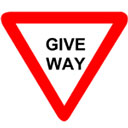
- You must give right-of-way
- You have the right-of-way
- Early warning device
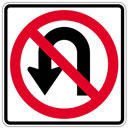
- No right turn permitted
- No left-turn permitted
- You must not make a U-Turn
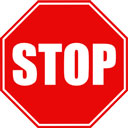
- Stop only if other vehicles are approaching
- stop sign 150 meters ahead
- Make a full stop at the intersection and proceed when the way is clear
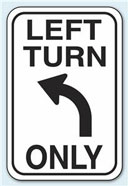
- Left turn only
- one way to left
- Exit to left
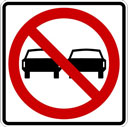
- No overtaking
- No parking
- Bus stop
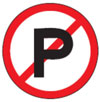
- Indicate that you must not pass
- No entry of any motor vehicle
- No parking
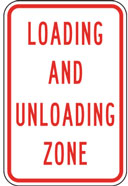
- Motor vehicle cannot load passengers
- Motor vehicle cannot unload passengers
- Motor vehicles cannot load/unload passengers
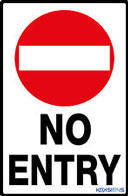
- No Entry to all types of vehicles
- Full stop
- Dead-end street ahead
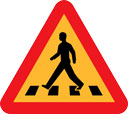
- School Zone sign
- Pedestrian Crossing
- Playground
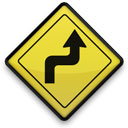
- Road bends, prepare to go right and then left
- Road close ahead, go right
- You may travel beyond 30 kph
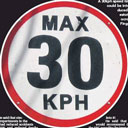
- You may travel beyond 30 kph
- You must limit your speed to 30 kph
- The distance to the next town is 30 kph
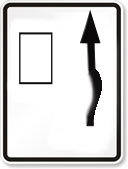
- Stay on the extreme right side of the highway
- Road widens ahead
- Winding road
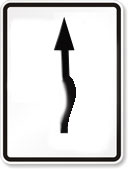
- There is a winding road ahead
- Road widens ahead
- Barricade ahead, prepare detour

- Railroad crossing, slow down and prepare to stop
- intersection
- Highway ahead
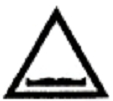
- Humps ahead - slow down to keep control
- soft shoulder
- You are approaching a downgrade
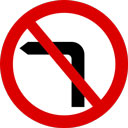
- No left turn
- Exit to the left
- One-way to left
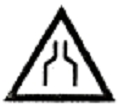
- Narrow road ahead
- You are approaching a divided highway
- Keep right only
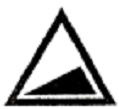
- Steep ascent
- Falling rocks
- Your are approaching a downgrade
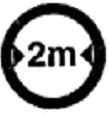
- No entry of motor vehicle with more than 2 meters width
- The width of the lane is 2 meters
- Keep a distance of 2 meters to the vehicle infront of you
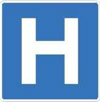
- Hospital zone
- Intersection
- Highway
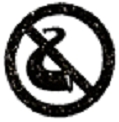
- Runabout
- No blowing of horn
- Winding road

- You are approaching a rotunda
- You are approaching Bonifacio monument
- Enter intersection
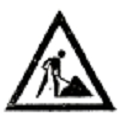
- A construction sign replacing flagman on duty
- Construction sign - slow down, obey
- This warns of highway work operation ahead
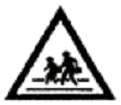
- School zone
- Pedestrian lane
- Playground zone

- Traffic signal ahead
- Railway crossing ahead
- Stop sign 150 meters ahead
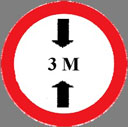
- The distance to the next intersection is 3 meters
- Do not enter if car is more than 3 meters height
- Stop sign 3 meters ahead

- Narrow road ahead
- divided highway ends
- Narrow bridge ahead
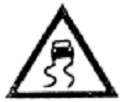
- Winding road
- Curve ahead
- slippery when wet

- Divided highway
- Two-way traffic
- Highway divides
Study this reviewer carefully and you will surely have a better chance to pass the LTO Driver's License exam. GOOD LUCK to all drivers!